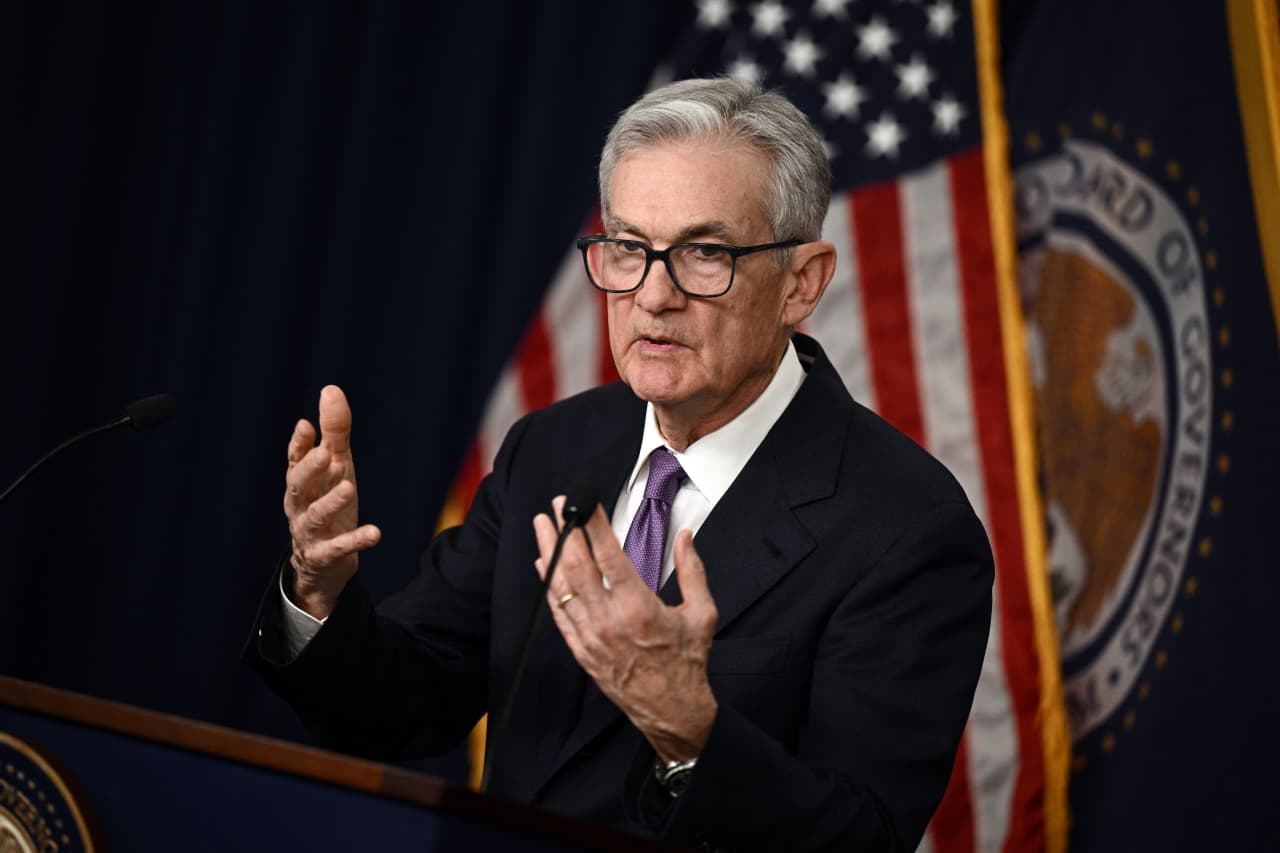US inflation news has been better lately, but the Federal Reserve should resist the temptation to lower interest rates too soon.
The economy has recovered well from COVID: GDP is roughly back to where economists expected it would be at the start of 2020 if the pandemic had not occurred.
Workforce participation has recovered. It was at 63.3% just before Covid and is now at 62.5%. We could use the 2.1 million additional workers to alleviate shortages, but the U.S. population is aging and women face additional challenges in raising children as they return to offices.
The ratio of job offers to job seekers is around 1.4. and structural changes in the economy – the arrival of artificial intelligence, consumers buying more goods during pandemic shutdowns, and now the return to services – have exacerbated labor shortages.
An analysis by former Fed Chairman Ben Bernanke and economist Olivier Blanchard indicates that the ratio would need to fall below 1.0 for inflation to fall to 2%.
In December, the consumer price index increased 3.4% year-on-year. That’s better than 9.1% in June 2022 and 6.5% a year earlier. Much progress has been made through asset deflation. China’s economic problems, the cheaper yuan against the U.S. dollar and the depressed state of the oil market have contributed to lower prices of U.S. imports.
China has key strengths in electric vehicles, battery technology, solar panel and wind technology, lithium, rare earth minerals and other sectors needed by Western economies and fast-growing Asian nations . China will recover and the yuan will stabilize. And as Europe emerges from its latest crisis, it will import more. This will end deflation of manufactured goods and raw materials and increase oil demand and prices.
Meanwhile, a tight U.S. job market and wage pressure continue to impact services, minus energy, which make up 59% of the consumer price index and where inflation hit 5.3% in December 2023.
Housing – which includes notional rents on owner-occupied homes, rental homes and rental apartments – accounts for 35% of the CPI and an even larger share of the index for core services. Private sector surveys indicate that rents for new apartment rentals are declining. Most home and apartment leases adjust rent on an annual basis, and some less frequently. As a result, the impact of falling rents on new leases is manifested as a lag in the consumer price index, and some analysts expect a sharp slowdown in the consumer price index in 2024.
But private rental indices fell significantly from August 2022 to January 2023 without appreciably reducing the cost of housing in the CPI in subsequent months.
In fact, most housing in America is owned, not rented. Home prices have increased in 2023 and are supporting notional rent on owner-occupied homes: this component represents 73% of the housing component in the CPI.
The costs of building homes and new apartments are driven by increasingly stringent local building codes, which lengthen construction times, zoning issues, and shortages of labor and materials when housing construction hits its periodic peaks.
Monetary policy is becoming more permissive
Economists expect U.S. economic growth to slow but not collapse into a recession in 2024, and recent good inflation reports have markets and analysts predicting the Fed will cut interest rates soon.
Indeed, in its most recent projections, the Fed projected reductions equivalent to three percentage points in the overnight bank lending rate for 2024.
But cutting rates too soon would be a mistake.
Since October, the 10-year Treasury bond yield, which influences the interest rates charged for mortgages and other credit throughout the economy, has fallen below 4% as the Treasury’s borrowing needs have shrunk in the fourth quarter of last year and bond markets were increasingly anticipating a rate cut.
In the current quarter, funding requirements will increase and without any other changes in Fed policy, this should stabilize the 10-year Treasury yield around 4%, perhaps a little higher. With core inflation at 3.9% and assuming trend real GDP growth according to the Fed’s forecast of 1.8%, a long-term Treasury rate of around 5.6% would be more appropriate. All this indicates that the Fed’s current policy stance is not restrictive at all.
A recent IMF study of more than 100 inflation episodes in 56 countries since the 1970s found that inflation was brought to desired levels within five years in only 60% of cases. The Biggest Problem: Premature Celebrations: Central Banks Cut Rates Too Soon.
When central banks stayed the course and accepted further short-term pain, inflation was more reliably controlled and GDP, employment and wages recovered well over five years. The economy is likely to prosper more if the Fed finishes the job of bringing core inflation to 2% before lowering interest rates further.
Peter Morici is an economist and professor emeritus of economics at the University of Maryland and a national columnist.
Moreover: Because the health of the economy right now is not as uncertain as you might think
Read also: The recession was inevitable, economists said. That’s why they were wrong.
